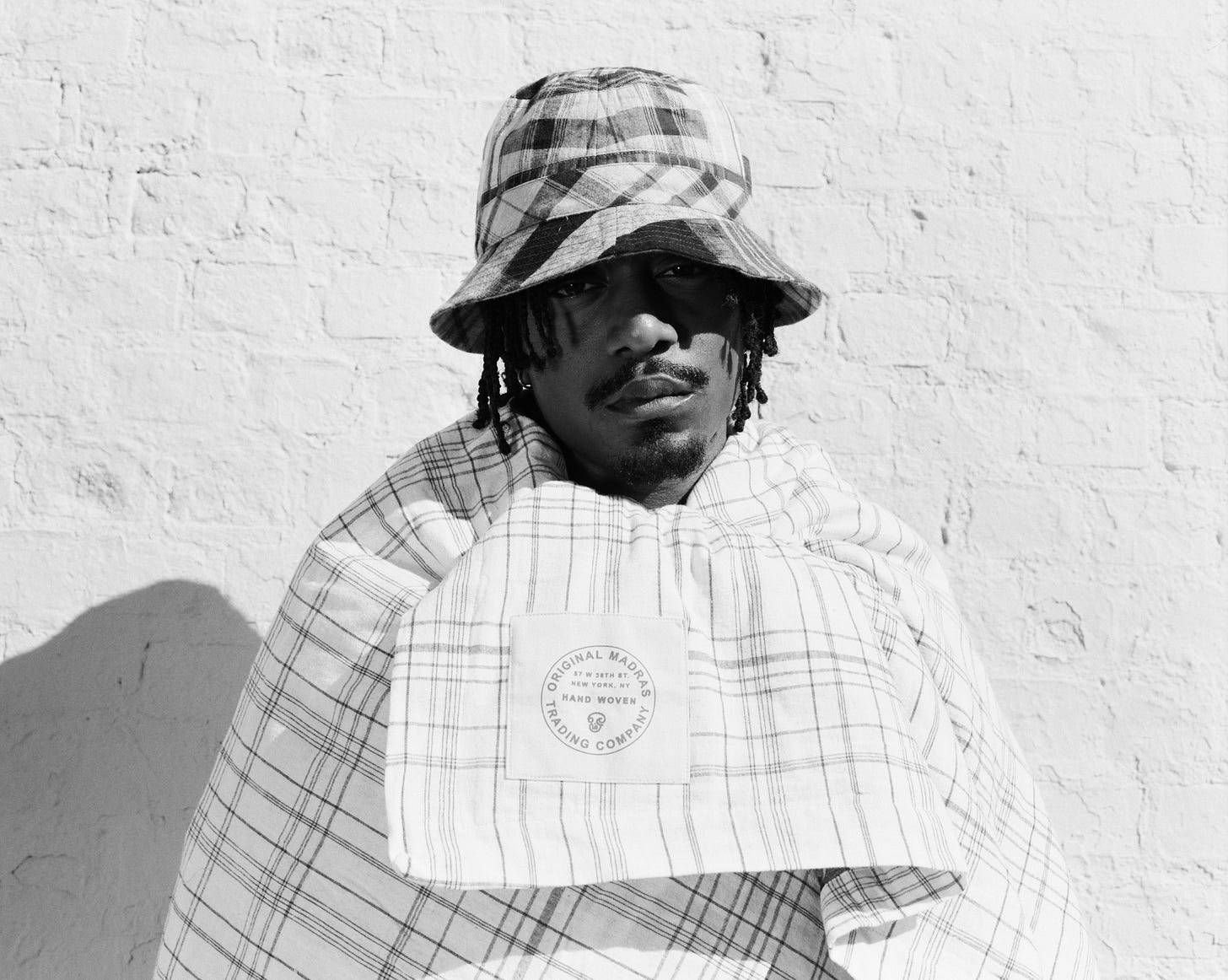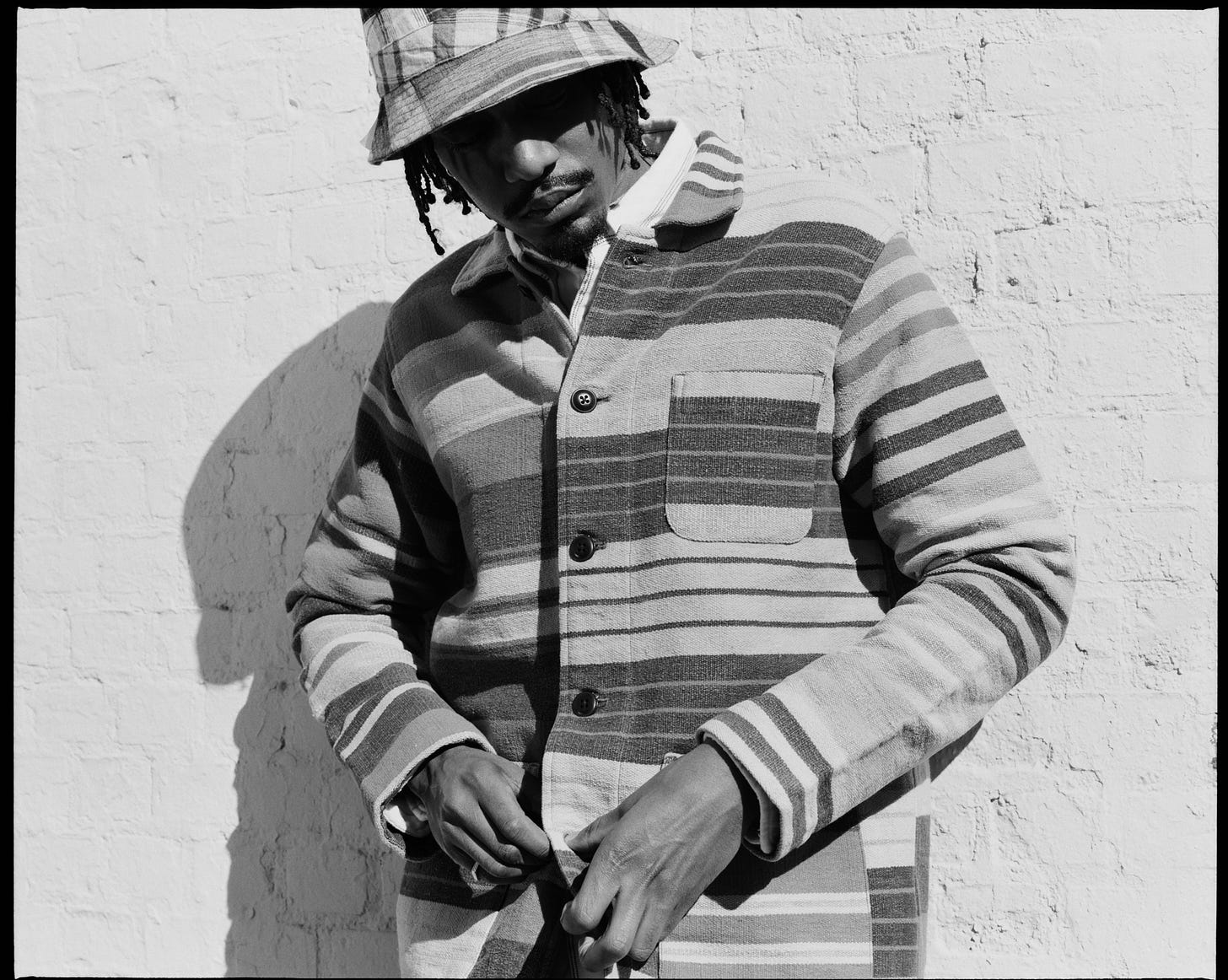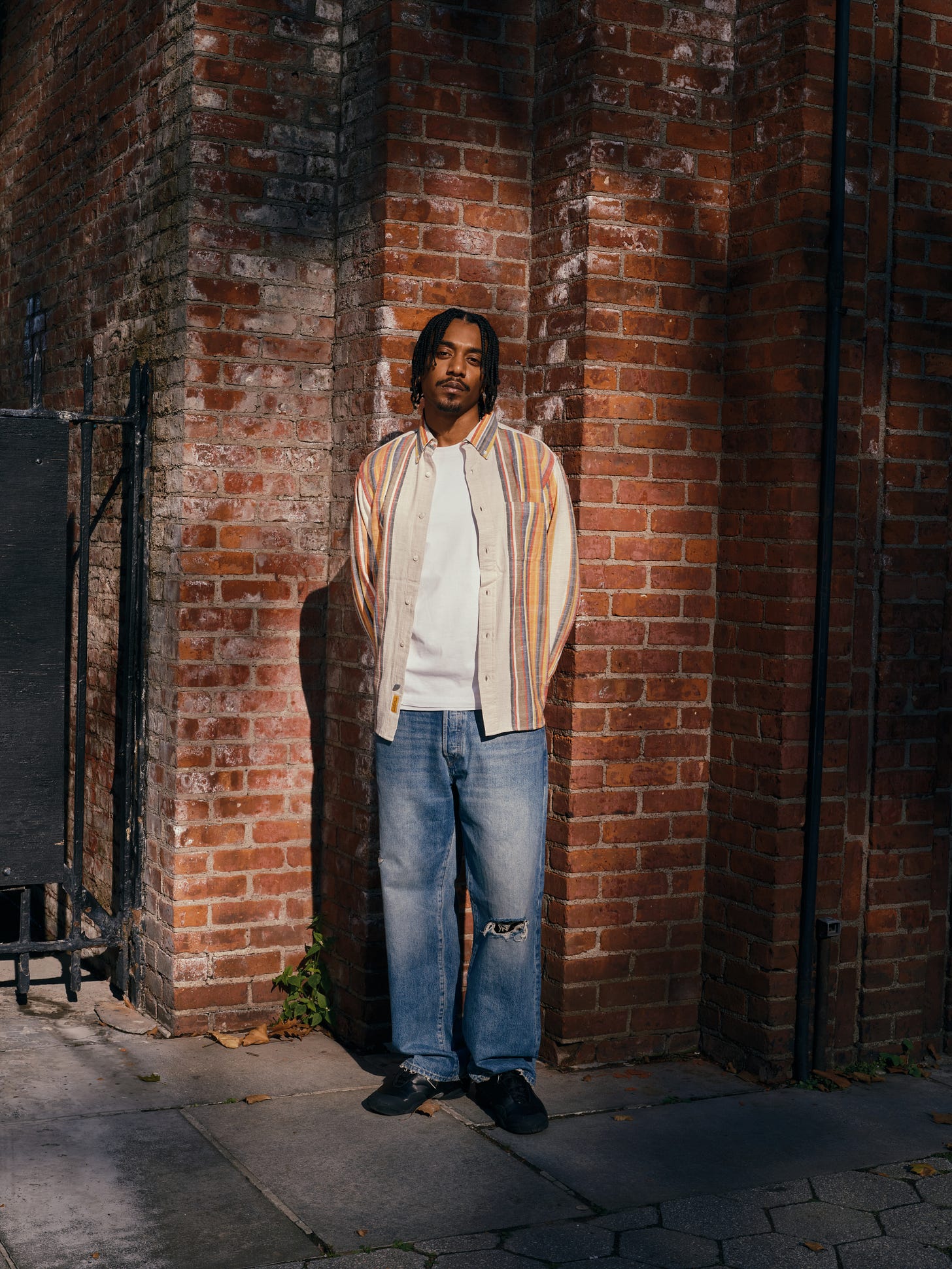Issue #53 | Original Madras Trading Company’s Prasan Shah
On building a brand and family heritage
When I first slipped on the Original Madras Trading Company N°111 Round Tail Shirt Jacket, I knew it was special. It was evident in the quality of the cloth and construction. The pattern was unique, a green and orange check with thin stripes of red and light blue. It fit like it was made for me.
OMTC released its first collection in spring/summer 2020, but the brand’s history goes back much further, to the founding of a family run wholesale business in 1973. That’s when OMTC founder Prasan Shah’s grandfather arrived in New York from India with a trunk full of Madras cloth. He set up shop on 38th St. in the Garment District and went on to supply clothing to American powerhouses like Ralph Lauren, Brooks Brothers, and J. Crew.
Today, OMTC’s own line is sold in about 70 stores around the world, many of them in the U.S., including boutiques in North Carolina, Portland, Oregon, and Grand Rapids, Michigan. The brand has done collaborations with Sid Mashburn, Nigel Cabourn, and A Continuous Lean, among others.
I had a chance to chat with Prasan recently over coffee just across the street from his grandfather’s office on 38th street, which is now Prasan’s own. The interview has been edited for length and clarity.
FRONT OF BOOK: Can you start with the history of the brand and your grandfather coming to the U.S.?
Prasan Shah: Sure. We’re a third-generation family business. My grandfather set up the company now 51 years ago, in 1973, in what was then called the city of Madras, India, now called Chennai. When the business was started back then, 50 years ago, all we made was Madras check shirts for the American market, and that was it. Day in and day out, we were just making Madras check shirts. My grandfather literally started with 10 machines, 10 sewing machines under a veranda in the city of Madras.
Back then, as the business started to grow and do better, we became a traditional Indian garment manufacturer. Over time, we made for all of the big brands. We made for Ralph Lauren for over 35 years, including Polo and RRL, we made for Brooks Brothers. We made for J Crew. We made for Filson, Woolrich, Nautica, you name it. That side of the business still exists. It’s had its ups, it’s had its downs, definitely, but it still exists, and we continue to produce clothing for predominantly American brands.
Original Madras, the brand itself, began in March 2020 when we sold our first ever handloom, original Madras shirt. But the idea of the brand has been around for over eight or nine years. I went to university in Boston, where I did an undergraduate in business administration with a supply chain focus, but I also studied as a minor social entrepreneurship. And one of the ideas my father and I talked about as early as when I was in college, was starting this brand and reviving handloom Madras and all of the Madras you see today. The idea was was: how do we revive this amazing dying craft of hand woven Madras from Madras?
Today, there are very, very few weavers in Madras that know how to hand weave. So we’ve literally set up handlooms at my family’s factory. We started out with two looms our first season, and today we have over 35 looms. We’re supporting over 50 weavers in the Chennai area. And so it’s been very exciting, and it’s been very fulfilling and satisfying to be on this journey.
Can you break down what Madras cloth is and what’s special about it? What are the origins of it?
At least from the American customer point of view, Madras has always been this amazing, fun, preppy cloth from Brooks Brothers and Ralph in the ’70s. But in reality, most people in the fashion business don’t seem to know that Madras is the city first and then a fabric. I love to use the Champagne comparison: It really is only Champagne if it’s from Champagne, and that’s true of Madras as well.
Number two is the cloth itself has to be 100% cotton. You’ll see brands do a Madras plaid, and it’s 100% linen. That’s a sort of oxymoron. It’s not Madras. It’s typically a multi-color, so it has to be more than two colors, irregular check or plaid. So if it isn’t a check with more than two colors, it automatically is not a Madras.
And then the layer that we add to it is it’s only Madras if it’s hand woven in Madras. A lot of people do Madras made on machine loom in Dhaka, machine loomed in Portugal, and they’re calling it Madras. To me, that’s not Madras. If it isn’t hand woven in Madras, you’re wearing a plaid shirt.



In terms of patterns and designs, what are your reference points?
We have a beautiful archive here on 38th St., just down from the original Lord & Taylor. Our archive is a 900-square-foot room, floor to ceiling fabric swatches that go back 50 years with everything we’ve ever produced. Woolrich and Polo swatches. Some of that can be used as a reference point. We do have a design director, Nicholas Benitz, Nick, for short. Nick is a great designer. He was with Hackett for over 20 years, and just has a great eye for design. Everything that we’ve ever designed in our collection has been designed by Nick and the team that works with him, which includes the weavers.
He actually comes to Madras. He spends four months of the year there, and he works with the weavers. Even though he doesn’t speak the language, he’ll work with our team, and the weavers will tell him, ‘That design is going to be hard for us,’ and he’ll try and understand why, and then we work the design accordingly.
Can you talk about carving out a unique brand from the family company? What was your inspiration, and what market you were targeting?
Being at business school in America and speaking to my father—my father has a great design sense and his own aesthetic and the conversations we started to have, both of us combined—and I have to give my dad a lot of credit, we wouldn’t exist if it wasn't for him. Honestly, I’m almost getting to execute on his vision and his dream in a sense, which I’m fully bought in on.
But the conversation started with him saying, ‘Listen, I’m sick and tired of making for other brands.’ We were a point then as a factory where brands owned us and if they decided they could get a shirt made for 10 cents cheaper down the street, they’d go down the street and get it made with a competitor. And my dad was like, ‘I don’t want I have all these people whose livelihoods depend on us feeding the factory, and if these big American brands are going to treat us like shit, that puts us in a very precarious place. So I want to build our own brand.’ And me being in business school, I was like, ‘Yeah, I agree with you. A factory is a factory is a factory. A brand is what really holds value. So if we can build a brand and not have to rely on external parties and create our own demand, I think that puts us in a great space.’
What I noticed when I got my Original Madras shirt is that there’s something different about this. There’s something special about it. You can really feel that.
That means very much to me. It gives me goosebumps when you say something like that, because that’s the vision. That’s what we’re trying and so I think that’s where we’re at. We want to build and grow organically, a sustainable, beautiful brand and we’re lucky, we’re privileged. There’s no outside investment, there’s no banks, there’s no fancy VC backed private equity thing going on here. The family is backing this. We’re growing it organically and sustainably, and the family believes in it, and the business is proving itself in the stores that we sell to in the name that we’re slowly but surely making it for ourselves. My dream, I’m 32 years old today, is I want my grandkids working at the warehouse. Am I gonna have grandkids? Am I gonna have kids? I don’t know, but that’s the dream.
Do you have any aspirations to open your own brick-and-mortar?
I think a store is where you can really tell your story. So I think that is part of the dream. That’s part of the vision. Do we have any active plans for it right now? I would be lying if I said so, but yes, we would love to do that. My dream would be in New York or Japan—Tokyo or Kyoto or Osaka.
How do you envision next 5-10 years for the brand?
I think first and foremost is really establish ourselves as a menswear brand in the world that we fit in today. I want us to be an established name, a reliable brand, like I know if I get that triple-one overshirt every other season from OMTC, I know what I’m getting. So that’s number one. And then within that, establish the other points of sale. Right now, 99% of our sales come from wholesale. I’m a huge believer of wholesale. But having said that, I can’t be naive, and I have to accept that there needs to be other points of sales. So I want to establish our e-com channel. I want to establish within the next two years our own store, and I want to be able to do trunk shows, pop-ups with a lot of these wholesale products.
Great, I think that mostly covers it. Is there anything we missed?
I’m very passionate about we what we do, of course, as a family and as a business. We’re financially invested, yeah, but I hope you heard in my voice today, I’m emotionally invested.
For sure.
These weavers and their livelihoods matter to me. The fact that we grow and build a beautiful business matters to them. So yeah, I think the last thing I would love to say to you, because I think to me, a lot of this brand is heritage—in a sense, we’re honoring this huge legacy, and I’m acting as a catalyst for it. So the way in which we do it has to be right. We cannot take shortcuts.
Yeah. I mean, you said that you’re emotionally invested, and I think you can tell, you can tell that there’s a real care behind the brand.
Thank you, Mitch. I really appreciate it.
My pleasure. I was gonna wear the shirt today, but I didn’t know if would be cheesy.
I would have nerded out.
I should have worn it.
Thanks, Prasan. I appreciate the interview, and best of luck to OMTC.
Please, everyone, check out the brand. It has a bright future.
Thanks for reading and see you back here soon.
Mitch
Question? Comment? Suggestion? Caught a typo? Email me at mitch.moxley@gmail.com












Wow. I've looked at OMTC stuff before but now, hearing the story and passion, I'll definitely buy something.
Great interview, Mitch!